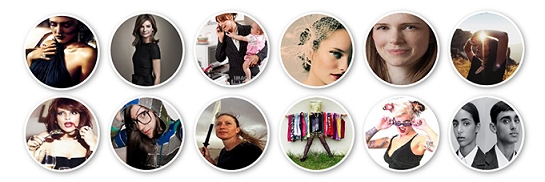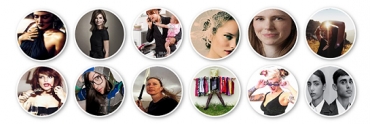
 Marketers have, of course, cottoned onto the fact that today’s women have little in common with the figure of the typical housewife who dominated the 80s. They are well aware that the role of women both in family and public life has undergone a radical transformation which shows little sign of stopping. Yet overall they seem to be struggling to adapt to these changes and translate this evolution into relevant and engaging communication that really speaks to women.
Marketers have, of course, cottoned onto the fact that today’s women have little in common with the figure of the typical housewife who dominated the 80s. They are well aware that the role of women both in family and public life has undergone a radical transformation which shows little sign of stopping. Yet overall they seem to be struggling to adapt to these changes and translate this evolution into relevant and engaging communication that really speaks to women.
This is perhaps less surprising in light of the fact that 97% of creative directors working in advertising are – you guessed it – men. This goes some way towards explaining the longevity of certain feminine stereotypes which continue to dominate glossy pages and digital screens, despite modern women embracing new definitions of femininity. In 2015, women happily play with the codes of a multifaceted femininity, redefining it in the process.
Of course, it’s not simply a question of locking up the ‘classic’ archetypes of femininity which brands have always used in their communication. From the Femme Fatale, with her beauty, sex appeal and irresistible charm, to the Amazon, determined, ambitious and willing to go to any lengths to succeed, to the Idealist, straight out of a fairytale, these models of femininity still have the power to reflect the aspirations of today’s women. The same goes for the Juggler, the iron-willed and steel-nerved wife, mother and businesswomen who is living proof that women are just as capable as men (if not more so). However, while these models can all resonate to a certain extent with today’s women, what really matters for brands is the ability to reinvent models of femininity; rather than rehashing these old archetypes in a contemporary context. Brands must offer a vision of femininity that goes beyond sexualised clichés built around notions of gender. Whether it is the Femme Fatale who uses her sexuality to destabilise men, the Amazon who looks to dominate them, the Juggler who craves their approval, or the hopeless Idealist waiting for her prince, all these archetypes are ultimately defined in relation to the opposite sex and male identity.
The 2015 woman has clearly left these feminine clichés behind. While she might still play with their codes from time to time, she projects and lives her femininity on a level which is more personal, more intimate and above all disconnected from all reference to gender and the male sex. Traditional archetypes of femininity no longer sufficiently reflect the aspirations of women today.
Today’s woman aspires more towards authenticity. Forget the days of anti-ageing creams, applied to 15 year old models to show off their effectiveness. When it comes to beauty, body and wellness, women recognise themselves in a more ‘real’ femininity. This is typified by the authenticity of the Real Me Woman, who is comfortable in her own skin and aware that her ‘flaws’ are what make her individual, or the Harmonizer, who is more focused on her wellbeing than on purely living; on a quest for balance and serenity.
But today’s woman is also full of humour, creativity and audacity. She sees herself in models of femininity which translate this new freedom of expression and put it centre stage. While the Goof is always the first to make fun of herself, she is equally capable of playing with sexist clichés and using them to her advantage (think Cameron Diaz in There’s Something About Mary). The Hummingbird is a whirlwind of creativity and curiosity, and flits around to draw you into a rich, sparkling universe full of surprises.
Finally, the 2015 woman needs to engage in struggles and make voyages of discovery to enrich herself, expand her horizons and experience moments of real intensity. She needs to go beyond her roles and responsibilities as a wife or mother (even if these remain a given for many), and open herself up to the world around her. A more intellectual and cerebral femininity – and one which is perhaps harder for brands to tap into – is typified by the Explorer, who is guided by her passion for the unknown and for new discoveries, or the Alternative, a hyper connected intellectual with an indefinable style.
Of course, this list is neither exhaustive nor definitive. The 2015 woman has a long way to go in her reinvention of models of femininity, which means plenty more riddles for advertisers and brand marketers as females of the world continue to redefine the traditional definitions of femininity.
Written by Cécile Gorgeon, Director Added Value.
Source:Added Value
